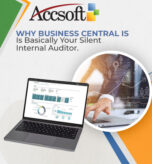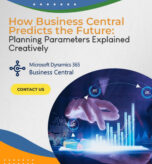
Choosing the right ERP solution often comes down to how well it aligns with your needs for scalability, integration, functionality, and future growth potential. In this blog post, we’ll compare Sage (with emphasis on cloud-based offerings like Sage Intacct and Sage 50cloud) against Microsoft Dynamics 365 Business Central in the context of their cloud ERP capabilities.
1. Deployment & Cloud Architecture
Business Central can be hosted on the cloud (Azure) or on-premises, and flexibility and control are subject to your firm or regulatory requirements
Sage Intacct is cloud-hosted on AWS. It cannot be installed on-premises
Sage has a robust architecture foundation but has no smooth Microsoft ecosystem alignment such as the luxury of being an Azure-based Business Central user
2. Functional Breadth & Scalability
Business Central is a full-fledged ERP, e.g.:
Financials, supply chain, inventory, sales, CRM, manufacturing, and project management all simultaneously
Sage Intacct is excellent for financial management, accounts, GL, cash, project accounting but more sophisticated operational ERP capabilities usually need additional modules or third-party add-ins
Sage 50cloud is really an accounting product with minimal scalability and no ERP modules such as CRM or manufacturing
Business Central grows with your business from a few users to hundreds, with increasing levels of transactions
3. Integration & Ecosystem Synergy
Business Central is intrinsically integrated with Microsoft 365, Power BI, Power Apps, Power Automate, Teams, and Copilot into an integrated, collaborative environment
Sage is APIs and third-party application-supported with more effort and in the absence of Microsoft harmony
4. Reporting & Analytics
Sage Intacct leads with complete financial reporting with multi-dimensional general ledger, and best use is to slice data by dimension such as location or project
Business Central natively has reporting, and when combined with Power BI and Copilot, provides interactive dashboards, AI-powered insights, and cross-functional analytics
5. Automation & Intelligence
Business Central is feature-rich with automation capabilities, like workflow automation, AI-recommended recommendations, repeatable processes, and Copilot-powered forecasting and insights
Sage, while modern, inevitably falls behind in having such cutting-edge automation and AI capabilities; most of the steps remain manual or add-ons
6. Interface & Usability
Business Central offers a modern, easy-to-use, mobile-friendly, browser-based interface consistent with Microsoft UI design patterns and reducing onboarding friction
Sage Intacct is simple to use from an accounting point of view but arguably less intuitive for non-accounting departments
Sage 50cloud is probably founded on a traditional desktop UI without mobility and modern design elements
7. Cost Structure & Licensing
Business Central uses uniform role-based pricing (Essentials or Premium), usually with Microsoft services for extra overall value
Sage Intacct generally uses modular pricing by feature, by user, that is low to start and scales with business expansion or expanding functionality
8. Community & Support, Innovation
Microsoft innovation supports Business Central with ongoing update, global partner community, and strong community support
Sage Intacct enhances software credibility in finance, particularly with AICPA endorsement and fiscal accuracy
Summary Table: At a Glance
| Capability | Business Central | Sage (Intacct / 50cloud) |
| Deployment Flexibility | Cloud + On-premises (Azure) | Cloud only (AWS) |
| Functional Breadth | Full ERP across departments | Primarily accounting & finance |
| Scalability | High, growing enterprise-ready | Limited for non-financial operations |
| Integration & Ecosystem | Seamless Microsoft + low-code extensibility | Requires add-ons; less cohesive |
| Reporting & Analytics | BI-rich with Power BI, AI insights | Excellent financial reporting |
| Automation & AI | Advanced workflows & Copilot | Limited automation |
| UX & Mobility | Modern, mobile-ready interface | Traditional desktop UI; finance-focused |
| Licensing & Cost | Predictable and often bundled | Modular; can escalate with growth |
| Support & Innovation | Strong Microsoft support & frequent updates | Specialized finance enhancements |
Final Thoughts
You merely have a decision between Sage’s solution and Microsoft Dynamics 365 Business Central based on what your company’s top priorities are:
Select Sage Intacct or Sage 50cloud if.
You require specialized, best-of-breed financial accounting capabilities.
Your business is predominantly financial management with little ERP requirement.
Select Microsoft Dynamics 365 Business Central if.
You require a cloud-based, unified ERP that scales with you in finance, operations, sales, and projects.
You appreciate extensive Microsoft application integration, automation, and analysis.
You appreciate contemporary UI design, adaptive licensing, and continuous innovation.
Bottom line: For those businesses that must expand, react, and become network-enabled operations, Business Central provides the most cloud ERP power and responsiveness. Sage does finance exceptional well but if you must add more advanced ERP capabilities with smart automation and integration depth, Business Central is the game changer you’ve been looking for.







